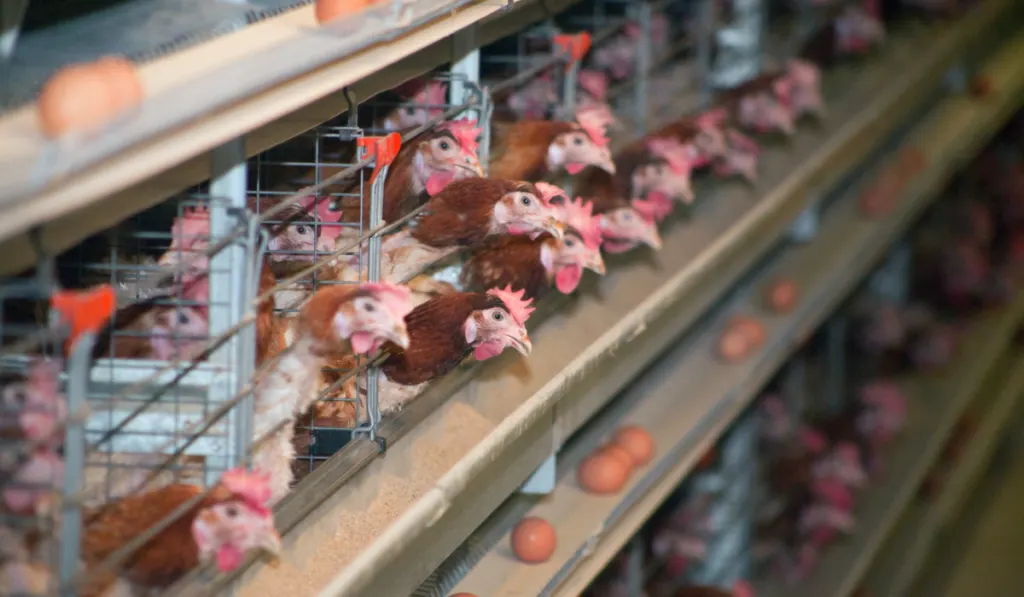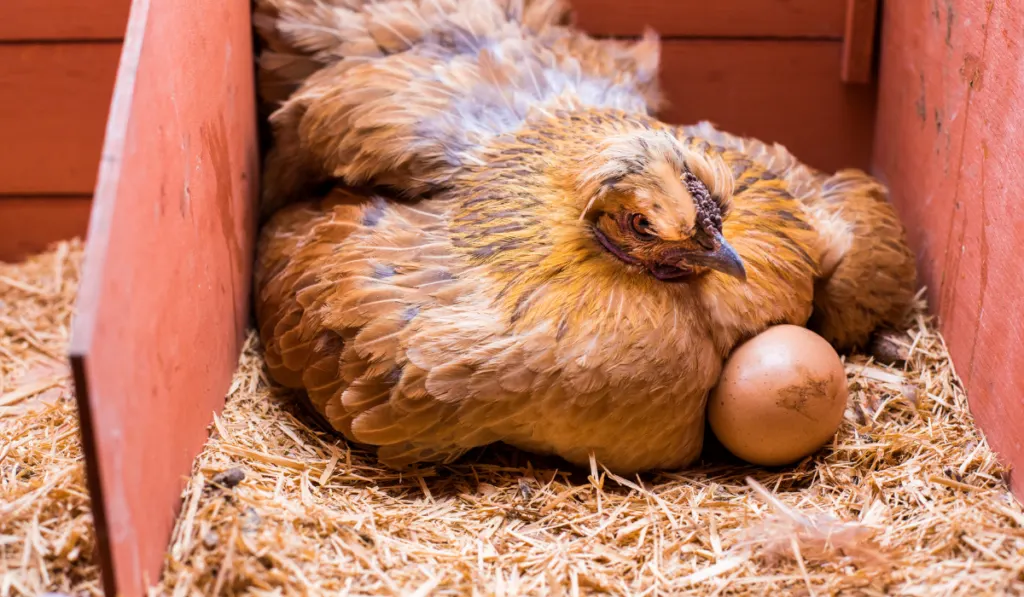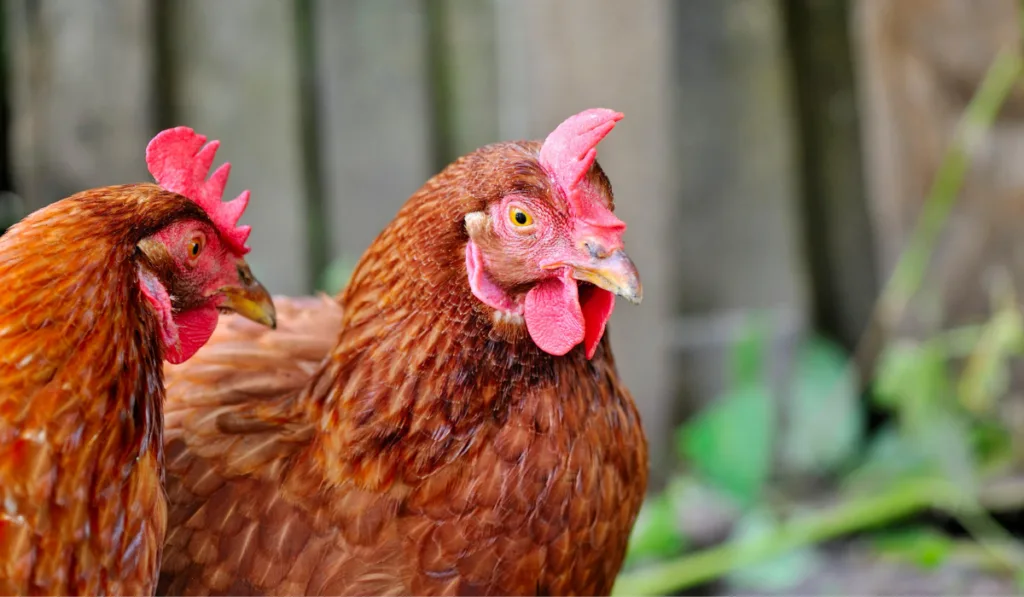Poultry birds have several different functions. It is easy to assume that most of such birds end up on the dinner table. But there is some information about laying hens that may surprise you.

Can you eat laying hens?
Laying hens can safely be eaten just like their non-laying counterparts. Depending on their age, the meat may be tougher in texture and more gamey in taste.
So the real answer to this question is dependent on your taste. Meat from laying hens is generally thought to be gamey. They also have a significantly tough texture in comparison to store-bought chicken meat.
This may, in part, be because laying hens are generally older than the broilers slaughtered to become store-bought chicken.
If you do not mind the gaminess or toughness of meat from laying hens, then, by all means, you can sink your teeth into them.
Table of Contents
What is a Spent Hen?
A spent hen is a layer that has reached and passed her egg-laying potential. In other words, this hen now lays eggs at a rate lower than she used to.
Chickens have a typical lifespan of about eight years. Depending on how well you take care of them, they may last two additional years. Usually, young hens (or pullets) start producing eggs at 18 to 20 weeks of age.
Barring any unfavorable genetic, health, or environmental conditions, an average laying hen should produce an egg each day. This is possible because it takes about 26 hours for a new egg to form after a previous one has been laid.
Daily egg production continues until the first molting season starts – at the time when the days become shorter.
Molting is when the hens shed their old feathers to give way for new ones to grow. During this time, they also bulk up their nutrient reserves. The birds typically do not produce eggs while molting.
After molting, the egg production returns to its earlier frequency. However, as layers get older, the frequency of production reduces.
Laying hens usually have the most productive period in their first two or three years of life. After this period, their egg-producing cycle winds down.
Can You Eat Laying Hens?

The answer to this question is yes, laying hens can be eaten. Of course, before you do this, you might want to wait till they become economically unviable. Meaning that they are no longer productive.
The consumption of laying hens is usually an individual choice, mainly because of the status of the meat. By the time you might start to think of eating your layers, they will be maybe between two and three years old.
The older chickens are, the less tender their meat is. Broilers, which are the chicken type reared for meat, are usually slaughtered around 40 to 50 days old.
The difference in the texture of meat from a laying hen compared to that from young broilers is very significant. Hence, most people do not consider using laying hens for meat.
Furthermore, the layers and the broilers, interestingly, have markedly different tastes. Following many years of being raised with different breeding methods, the differences between the two types of birds have grown.
The meat from a laying hen tastes more like game meat. This taste is often not the first choice for many people, so they might avoid it, understandably.
It is important to note here that laying hen meat does not taste bad. It is just different from what is considered the norm.
Due to said features, meat from laying hens are more commonly used to make stews. There are even reports of packaged spent hens being sold as stewers.
Best Age to Eat a Chicken
The general rule is that the younger the bird, the more tender the meat. This leaves you with a choice to make.
If you prefer the soft, easy-off-the-bone kind of meat, best get to your chicken early. However, if, for some reason, the tougher, gamey-tasting meat is your fancy, you may let your chicken freely range a bit more.
How are Spent Hens Treated?

Eating spent hens is not the most common activity. So you may wonder what happens to the millions of spent birds that have stopped their egg production.
The outcome depends on the farmer. Of course, it is not very economically beneficial to keep feeding so many birds that are no longer productive.
Therefore, one of the options that are commonly practiced is to process the bird into pet food. Spent hens are common supplies for pet food production plants.
Another option is to euthanize the hens. This is often done by gassing them with carbon dioxide, thereby asphyxiating them. Once done, the birds may be landfilled or packed into dumpsters.
There are concerns about these methods as being inhumane. So not many want to practice them.
For farmers that have a market, the chickens are sold off in the localities for food. Either that or they may process the birds for meat.
If the burden is not too heavy, an option is to leave the hens to keep living on the farm. Older hens can potentially be beneficial in the following ways:
- With their excrement, they contribute manure to the farm.
- They can help control weed growth and eliminate bugs.
- They are better lookouts for predators than the younger hens.
- In case that is your mission, they are better at brooding eggs than the younger hens.
Final Take
You can eat laying hens. But before you go on that adventure, you should know that it may taste different than what you are used to. The meat is not as soft as the usual chicken meat, and it has a gamey taste to it. If you decide to eat a laying hen, their meat may be best used in a stew or soup.
Resources
- https://www.hobbyfarms.com/using-laying-hens-for-meat-2/
- https://www.almanac.com/raising-chickens-101-when-chickens-stop-laying-eggs
- https://www.huffpost.com/entry/egg-laying-hens_
- https://thebigbookproject.org/knowledge-base/what-is-a-spent-hen/
- https://www.farmdrop.com/blog/eat-cook-spent-hen-recipe/
- https://coopcontrols.com/2018/06/29/raising-chickens-for-eggs-or-meat-its-a-matter-of-taste/
